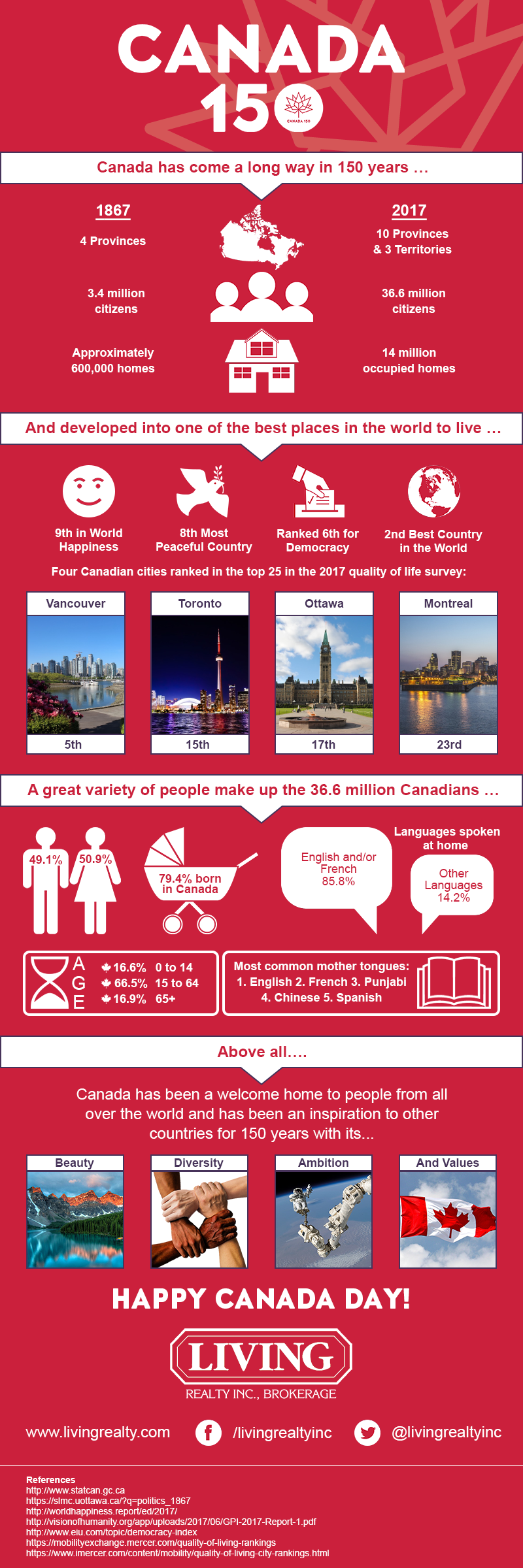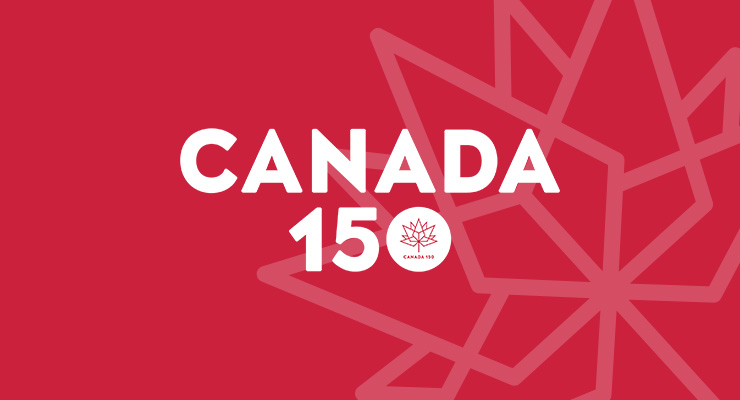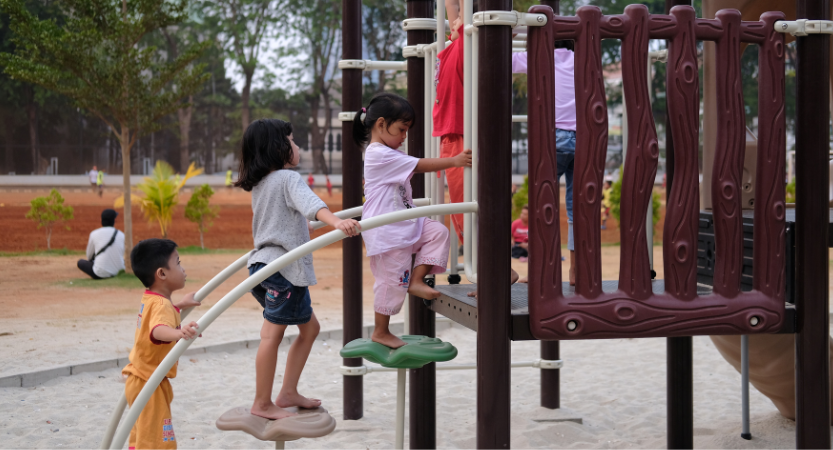There will be huge celebrations across Canada on July 1, 2017, as Canadians celebrate Canada 150 – the 150th anniversary of Confederation. This makes it an extra special Canada Day and we thought it would be a good time to look back at how the country has changed and what makes it such a great place to live.

When the Dominion of Canada was formed in 1867, the country was quite different from the one we know today. There were around 3.4 million citizens, compared to the estimated 36.6 million at the time of Canada 150 celebrations. Those people lived in approximately 600,000 homes, which is a long way behind the more than 14 million occupied homes in modern-day Canada. The country was also a lot smaller in size in 1867 as there were only four provinces: Ontario, Quebec, New Brunswick and Nova Scotia.
With the many changes over the last 150 years, Canada has developed into one of the best places in the world to live (Tweet this). The country ranked 9th in the 2017 World Happiness Report, 10th in the 2016 Human Development Index, 8th in the 2017 Global Peace Index, 6th in the 2016 Democracy Index, and was voted 2nd best country overall in the 2017 US News best countries rankings released just a few weeks before the celebration of Canada 150.
Unsurprisingly, this means Canada has some of the best cities in the world to live in and call home (Tweet this). In the 2017 quality of living rankings by Mercer, Canada boasted four cities in the top 25: Vancouver (5th), Toronto(15th), Ottawa(17th) and Montreal (23rd).
A great variety of people have the privilege of being among the 36.6 million Canadians. According to the most recent census, 50.9% of the population is female and 49.1% male. Meanwhile, for the first time ever, people aged 65 and older were a larger proportion of the population (16.9%) than people aged 0 to 14 (16.6%), showing that Canadians are getting older.
Data from the 2011 Census shows that 79.4% of Canadians were born in Canada and 20.6% were born elsewhere. That census also showed that the five most common mother tongue languages are English (18,858,980 people), French (7,054,975), Punjabi (430,705), unspecified Chinese (425,210) and Spanish (410,670). It should be noted that, in addition to the unspecified Chinese category, there were also many respondents who listed Mandarin (248,705) or Cantonese (372,460) as their mother tongue.
As the country has grown, the way Canadians live has changed. In 1867, over 80% of the population lived in rural areas, but that had dropped to 18.9% by the time the 2011 census took place, with the majority of people now living in urban areas. Around the time of Confederation, there were approximately 5.7 people per household and that has dropped dramatically since then, with an average of 2.4 per household according to the 2011 census.
Modern Canadians also have much more luxury than their forebears, with the average home in Canada now 1792 square feet – considerably larger than it was just a few decades ago. One of the reasons for the larger size is that single detached houses now make up 53.6% of the 14,072,080 occupied dwellings in Canada (Tweet this), with townhouses (6.3%) and semi-detached houses (5.0%) also boosting the average size. With regards to homes, perhaps the most important number on the minds of Canadians is the average price of a home, which stands at $598,433 in Ontario and $530,304 in all of Canada (Tweet this).
Above all, Canada has been a welcome home to people from all over the world and has been an inspiration to other countries for 150 years with its beauty, diversity, and values (Tweet this). Living Realty is proudly Canadian and we look forward to many more years of helping people find houses in this great country they call home.




